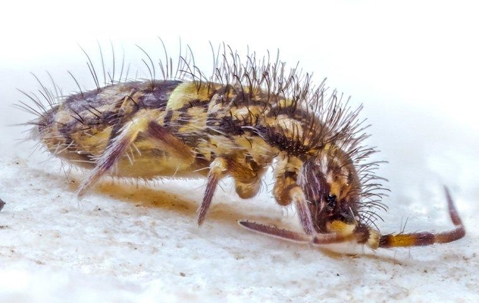When outsiders think about Texas, they are quick to joke about how everything is bigger. (Everything might not actually be bigger, but it just feels a little more awesome within our state borders). That’s why Frisco homeowners take so much pride in houses and property. If you want to be the top dog, then everything has to look top-notch.
However, Frisco residents aren’t the only ones who love living here. We have our fair share of pests, and even the tiny ones can be a big pain. Unfortunately, when it comes to homes and businesses in Texas, small pests can cause some of the biggest problems, and that can definitely be said for one of the most notorious pests found in Frisco: the springtail.
Springtail Description
While springtails are individually one of the smallest types of pests that cause problems in homes, they have strength in numbers. Springtails typically range in size from half a millimeter to 6 mm in length, making them even smaller than bed bugs.
Their names are derived from their unique body shape. Springtails are shaped somewhat like a small shrimp, with an appendage at the bottom of their bodies that acts as a spring which allows them to jump distances several times the size of their own body. This spring-loaded appendage, called the furcula, allows them to jump up to 10 centimeters in order to get around quickly or to avoid danger. Due to their small size and jumping ability, they are like fleas in this regard, and like fleas, you’re only likely to see them as they’re jumping around.
However, unlike fleas, springtails don’t enter homes and other structures on the skin of pets or humans they come into contact with. Instead, they’ll simply hop their way inside through open windows and doors, vent pipes, or inside potted plants that are brought indoors. They can even squeeze their way through window screens.
Springtails thrive in light dampness and mild humidity. This means that they will typically try to invade a home at two extremes: when the weather is very dry, or if it rains heavily.
While one springtail isn’t a big deal, the problem is their pack mentality. As springtails enter your house, they’ll do so in large droves. While they don’t bite or sting humans, the sheer numbers they bring when they invade can make them a huge headache to those affected.
Springtail Prevention
When springtails enter your home, it’s because they’re looking for a damp, humid environment that suits them better than whatever the weather is doing outside. If you’ve got moisture issues in your house, you have to start there. Dampness attracts them because they like to eat mold and fungi, but if you can limit the humidity and moisture in your home, they’ll quickly find another place to infest. To this end, you should make sure none of your pipes are leaking and try to use a dehumidifier to control the moisture in your crawlspaces and in the basement.
Other than moisture control, you can ensure that all parts of your house are properly ventilated as this will also prevent dampness. Another thing you can do in the yard is to move mulch away from your home’s foundation and direct all rain drainage away from the foundation.
However, it’s important to remember that while these moisture-control methods can be effective, springtail infestations can pop up quickly and unexpectedly. If you really want to get springtails out of your home for good, you need to go with the pros. Contact Adams Exterminating Company today for total springtail eradication or for more prevention advice. We can help your home become pest-free. Give us a call today to get started.

